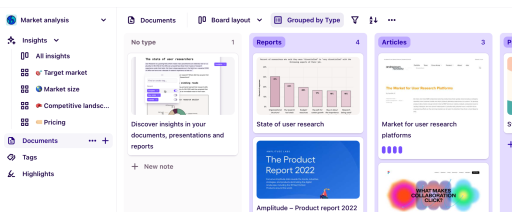

To outlast competitors, your business needs to stay ahead of the curve. To do this, you need to have your finger on the pulse of the market.
Conducting a market analysis can provide you with detailed information about all areas of your industry and help guide decisions for the greatest growth potential.
A market analysis is one of the things a business can do that benefits nearly every facet of the business. From your marketing team to your product development manager, all the way up to the CEO, the insights provided by a market analysis will help to drive important decisions and push the business forward.
Some of the ways in which it can do that are:
Your reputation is made or broken by how well you meet the needs and preferences of your target customers. Market analysis gives you deep insights into those needs and preferences, allowing you to tailor your products, services, and marketing strategies to better meet them. You'll build better customer satisfaction and increase brand loyalty in the process.
You don't just have to meet your customers' needs; you have to do a better job of it than your competitors. This will not be possible if you don't understand the strengths and weaknesses of those competitors. A market analysis can provide that information, giving you the data you need to set yourself apart from them.
Markets aren't static. Your business can't be static, either. Through ongoing market analysis, you'll identify opportunities and threats as they occur, allowing you to pivot gracefully to best handle those situations. You'll be able to better predict opportunities for growth and better prepare for potential threats such as new competitors or changing market conditions.
With more information about customer needs and preferences and deeper insight into emerging market trends, you'll be positioned nicely for a more efficient product development process. You'll be able to make product decisions quickly based on the knowledge you've gained and develop products the market will love.
Data plays an important role in planning and decision-making from the very first days of a startup to a large corporation planning its next few years. A market analysis helps you identify target markets, build your value proposition, and set realistic goals and objectives. They can help guide the feasibility of new business ventures or business expansions.
A market analysis consists primarily of three components. Although they overlap, each focuses the bulk of its intent on one specific area of analysis.
This part of the analysis is focused on the specific industry you operate in or are hoping to expand into. It examines the trends, characteristics, and dynamics of the industry.
To do so, it looks at the key players in the industry and its market size and growth rate. It also examines factors impacting entry into the market, such as technological barriers, regulatory requirements, supply chain logistics, and more.
The industry analysis can be broken down into the following steps:
The market examination focuses on understanding a specific target market within the industry.
When conducting a market analysis, you'll gather data about customers within the industry—their demographics, buying behavior, needs and preferences, and demand for products or services. This part of your analysis helps you identify your target audience and help you begin to form your value propositions.
Conducting the market examination portion of the market analysis consists of the following steps:
The final area of the market analysis is the competitor examination.
During this part of the analysis, the focus is squarely on the competitors operating in the industry. A close look will be taken at their strengths and weaknesses and the strategies they use within the market. This helps you further refine your value proposition and set yourself apart from other market players.
For the competitor examination, follow these steps:
As you can see, there are many steps within the three areas of market analysis. Getting a template to guide you through the ones you're working on can save a lot of time.
Below, we've gathered eight quality templates for some of the most important aspects of market analysis. All of the companies linked provide a host of other templates to fit other aspects of the analysis as well.
This comprehensive kit provides businesses, whether emerging or existing, with essential templates to conduct thorough market research. From competitive analysis to understanding prospective buyers, it covers every step of the process.
This market analysis template streamlines business market research by utilizing secondary sources and analyzing market reports and industry data. It saves time, emphasizes key insights, and informs strategic decision-making.
This SWOT analysis template helps assess strengths, weaknesses, opportunities, and threats in a concise and organized manner. It will help facilitate strategic planning and decision-making.
This risk assessment template, integrated with market analysis, enables businesses to identify and evaluate potential risks associated with market dynamics and other potential barriers.
This template helps to systematically evaluate the strengths and weaknesses of competitors. It provides a structured approach to research, and it analyzes its products, services, target market, marketing strategies, and financial performance.
This marketing SWOT analysis template allows for evaluating a company's marketing strategies. It helps identify strengths and weaknesses internally while analyzing opportunities and threats in the market.
This template aids in analyzing geographic, demographic, psychographic, and behavioral segments to better understand the target audience's preferences and needs. It enables effective targeting and messaging.
This market potential analysis template offers a comprehensive and customizable solution for analyzing market size, trends, segmentation, SWOT analysis, and new product launch strategy.

Here are 8 templates to analyze market reports, industry data, and other relevant documents.